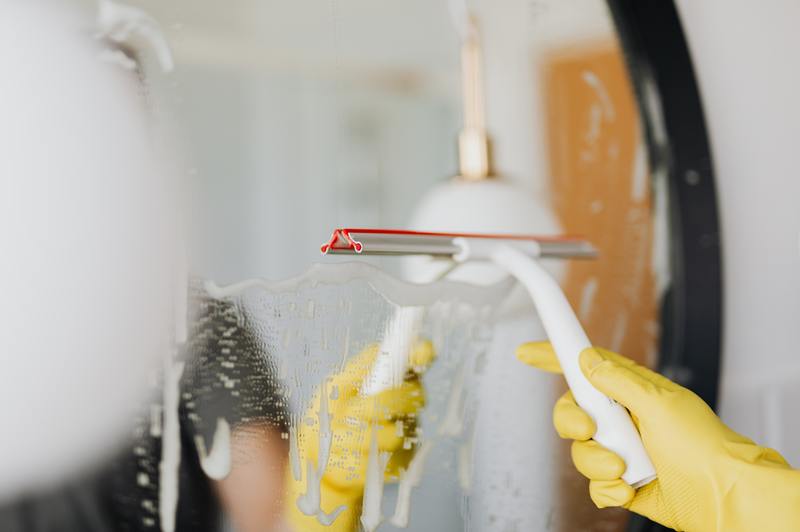You will find out about the three effortless ways on how to make mold and mildew remover using household items. These involve bleach, borax, vinegar, essential oils, and hydrogen peroxide.

What Is Mold And Mildew?
Typically, mold and mildew are types of fungi that contaminate households. They are generally products of a water-damaged environment.
Although, sometimes, they can grow due to accumulated dust and dirt. Condensation from the changing seasons also leads to fungi growth.
Normal changes in your home’s environment can also contribute to developing these types of fungi. Thus, it takes a whole lot of effort to avoid them.
If you grow various plants in your home, you are vulnerable to mold and mildew. If storms are frequent where you live, then you may suffer from periodic water damage.
Differentiating the two types of fungi is also essential. Mildew has a lighter color, ranging from faint yellow to white.
On the other hand, mold has darker colors. It can range from green to greenish-black, although there is such a thing as white mold.
Are they dangerous?
Mildew is a mildew form of mold, but it still has some adverse effects.
For example, it can damage your plants beyond salvation. It also victimizes objects made of organic materials, like natural fibers.
On the other hand, mold is more severe. It is indiscriminate with the environment it grows in and the objects it contaminates.
For example, it can break down drywall, leading to more repairs. Toxic mold exposure is also dangerous for immunocompromised individuals since it leads to mycotoxin poisoning.
Regular mold is still detrimental to you and your family’s health. It can trigger asthma attacks or lead to its development.
It’s also dangerous when you ingest it. Find out what happens if you drink mold in the linked article.
How Do You Detect Mold And Mildew In Your Household?
Usually, water damage leads to mold and mildew growth. Therefore, one way to detect mold or mildew growth in your household is to look for water stains.
Water damage is repairable. Here’s a linked article on how to fix water damaged plaster ceiling that may serve as a guide for future projects.
Apart from water stains, the earthy smell that mold and mildew exude may also be a sign. This can easily be noticed when your room lacks proper ventilation, as it may come with a stuffy feeling.
The solution to such odor exceeds encouraging airflow, and you need to solve it from its roots. You have to repair the water damage if there is any.
Afterward, proceed in removing the mildew and mold. You can use our DIY mold and mildew remover to get rid of fungi.
Steps In Making A Mold And Mildew Remover
Method #1. Vinegar and essential oil
Step #1. Gather your materials
You will need water, white vinegar, plastic bags, and essential oils for this project.
Step #2. Mix the ingredients
Mix the water and white vinegar in a 1:1 ratio and pour it into a clean spray bottle. Then, shake it to blend the two liquids properly.
Then, add ten to thirty drops of essential oil to lessen the vinegar’s strong smell. Some essential oils you can use are citrus oils, eucalyptus, lavender, and lemon.
Step #3. When using the solution
When you apply it on surfaces, make sure that the room is adequately ventilated. Moreover, ensure that you have protective gear.
Protective gear is essential to avoid fungi exposure. The mold and mildew remover may also irritate your skin, so put on gloves and long-sleeved shirts to be safe.
To avoid getting the spray on your eyes, put on eye protection as well.
Method #2. Diluted hydrogen peroxide
Another product that is useful as an anti-fungal solution is hydrogen peroxide. It’s fizzy, which makes it effective in killing bathroom mold.
Moreover, it is less harmful than bleach, so it’s a better solution for fragile surfaces. To use hydrogen peroxide, mix it with water at a 1:2 ratio and pour it into a spray bottle.
Then, let the mixture sit on the mold or mildew-contaminated area for about 10 minutes. Afterward, scrub the surface to loosen the spores and remove the stains.
To finish it off, wipe it with organic cotton unpaper towels to get rid of residual spores.
Method #3. Bleach and borax
Bleach is an incredibly potent mold and mildew killer. Couple it with borax, and it becomes more threatening to these household mold.
To use this, mix bleach and water at a 4:16 ratio, then add a teaspoon of borax into the mixture. Shake the spray bottle well before using.
Then, spritz the solution on moldy surfaces, but avoid using this on stone surfaces like granite, limestone, or marble.
Conclusion
This article takes you farther than how to make mold and mildew remover. It makes you understand why you ended up with fungi in the first place.
We think it makes the experience better when you get informed about the possible causes and the damages you may deal with if you leave these fungi unattended. We hope everything in this article about mold and mildew is clear.
